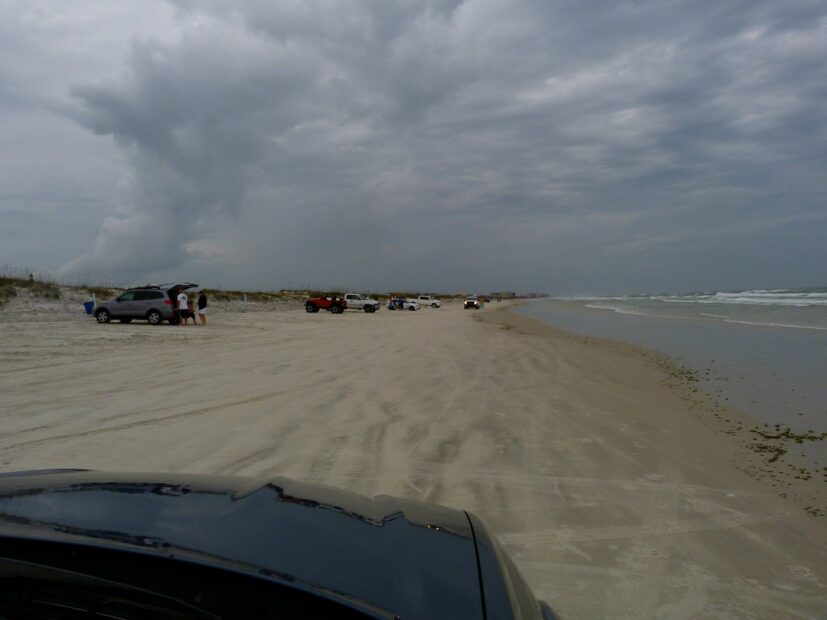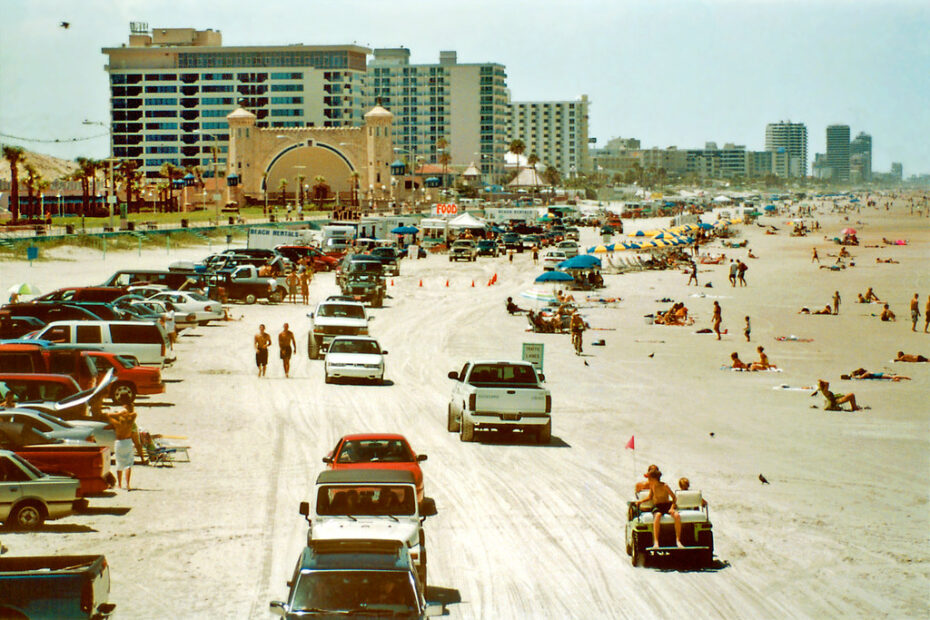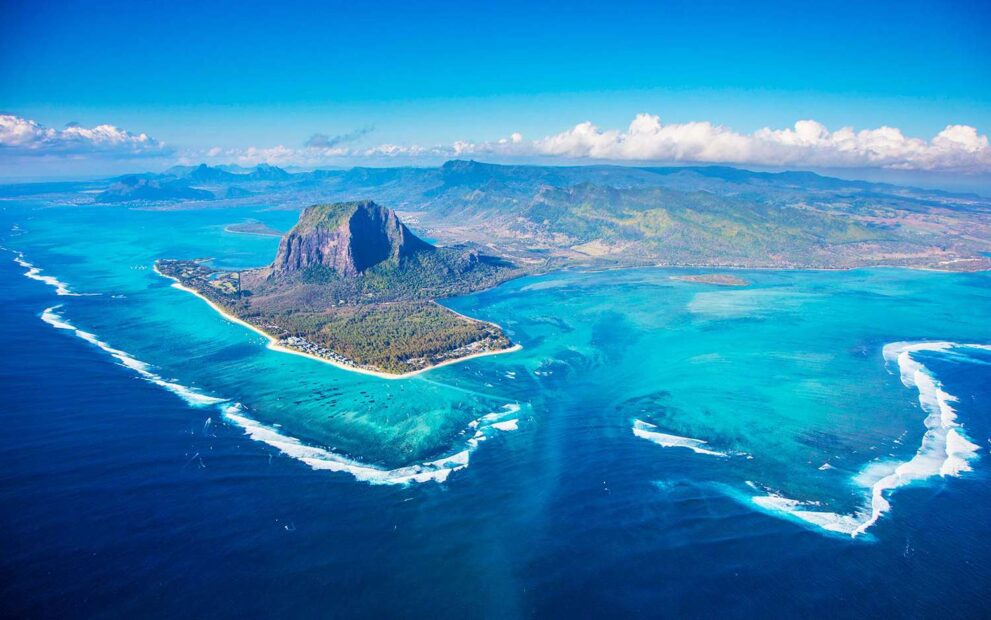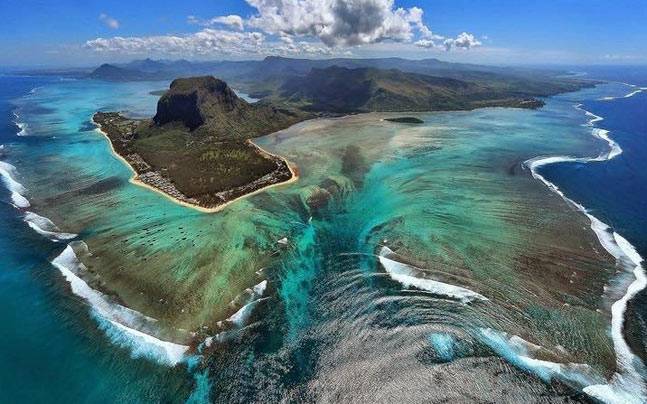Few places in the U.S. can claim the unique experience of driving on a sandy shoreline, but Daytona Beach, Florida, offers just that. Renowned for its hard-packed sand and rich motorsport history, Daytona Beach has been attracting beach drivers for decades. This tradition combines the thrill of driving with the calming allure of the Atlantic, making it an unforgettable experience.
Whether you’re a first-time visitor or a seasoned Daytona Beach enthusiast, this guide will walk you through everything you need to know—from rules and regulations to tips for a seamless drive. So, is Daytona Beach worth visiting? Absolutely—and here’s why.
Why Daytona Beach Is Famous for Beach Driving
Historical Context
Daytona Beach is synonymous with motorsports. In the early 1900s, its hard-packed sand served as a natural racetrack, hosting legendary speed trials and car races. This unique terrain birthed the modern NASCAR, with Daytona International Speedway just a stone’s throw away. Today, the tradition of beach driving continues as a nod to this storied past, allowing visitors to experience a piece of history firsthand.
A Unique Experience
Driving on Daytona Beach isn’t just about convenience; it’s a sensory adventure. The combination of ocean breezes, the sound of waves, and the freedom to explore miles of sandy coastline in your vehicle creates an experience you won’t find at most other beach destinations.
Rules and Regulations for Driving on the Beach: What You Need to Know
Driving on Daytona Beach is a thrilling experience, but it comes with rules designed to preserve the environment and keep everyone safe. Here’s a detailed guide to the essentials:
Access Points
Daytona Beach has several designated ramps for vehicles to access the sandy shoreline. These ramps make entering and exiting the beach safe and straightforward. Some of the most popular access points include:
- International Speedway Boulevard: A central and convenient ramp for many visitors.
- Silver Beach Avenue: A great option for beachgoers heading to the southern parts of Daytona Beach.
- Dunlawton Avenue: Offers easy access to nearby attractions and beach amenities.
Keep an eye out for clearly marked signs indicating where you can drive onto the beach. Remember, not all areas are open to vehicles, so stick to designated zones to avoid fines or being turned away.
Permits and Costs
Driving on Daytona Beach requires a vehicle access fee, which helps maintain the beach and supports conservation efforts. Here’s what to expect:
- Daily Fee: $20 per vehicle, payable at the entrance toll booths.
- Season Passes: For frequent visitors, seasonal permits offer significant savings.
- Volusia County Residents: $25 for the season.
- Non-Residents: $100 for the season.
Toll booths are located at the beach ramps, where you can pay and receive your permit for the day or season. It’s a simple process that helps keep the experience accessible for all.
Safety Guidelines
Driving on the beach is a privilege, and following these guidelines ensures a safe experience for you, pedestrians, and the local wildlife:
- Speed Limit: Stick to a strict 10 mph. This slow pace ensures safety for beachgoers, including children and pets.
- Driving Zones: Stay within the marked lanes, which are clearly indicated by cones or signs. This keeps vehicles away from no-driving zones and ensures smooth traffic flow.
- Parking: Always park parallel to the shoreline. Make sure you’re not blocking other vehicles, pedestrian paths, or emergency access lanes.
Seasonal Restrictions
The rules for beach driving change throughout the year, often based on weather and ecological considerations:
- Driving Hours: Generally, you can drive from sunrise to sunset. However, local conditions such as high tides or storms may restrict access.
- Sea Turtle Nesting Season (May 1–October 31): To protect endangered sea turtles, driving zones may be limited during this period. Always respect marked nesting areas to support conservation efforts.
Tips for Driving on Daytona Beach
Driving on sand requires preparation and attention to detail. Follow these tips to ensure a smooth and enjoyable experience:
Prepare Your Vehicle
- 4WD Advantage: Four-wheel-drive (4WD) vehicles handle sand more effectively, but standard vehicles can also manage if driven carefully.
- Tire Pressure: Slightly lower your tire pressure (around 15–20 psi) to improve traction on sand. Don’t forget to reinflate your tires afterward.
- Emergency Tools: Pack a small shovel or traction mats to help if your vehicle gets stuck, along with essential items like a flashlight and a jack.
Timing Your Visit
Planning your visit around the tides and crowds can make a huge difference:
- Low Tide: Driving during low tide provides firmer sand for better traction. High tide can limit access to certain areas and increase the risk of getting stuck.
- Avoid Peak Hours: Weekends and holidays can be busier, so arriving early gives you a prime parking spot and a more relaxed experience.
Essentials to Bring
Stay comfortable and prepared for a day on the beach by packing these must-haves:
- Sun Protection: Bring sunscreen, hats, and sunglasses to shield yourself from the Florida sun.
- Food and Drinks: A cooler stocked with water and snacks will keep you hydrated and energized.
- Emergency Gear: Beyond vehicle tools, pack items like jumper cables, a first-aid kit, and extra towels.
Parking Etiquette
- Designated Areas Only: Always park in the approved parking zones to avoid fines or inconveniencing others.
- Leave Room for Others: Ensure there’s enough space for cars to pass and pedestrians to navigate safely.
- Mind the Lanes: Avoid setting up large umbrellas, tents, or chairs too close to the driving lanes.
What to See and Do Along Daytona Beach
Daytona Beach offers more than just a unique driving experience. While cruising along the sandy shoreline, take advantage of these highlights:
Scenic Views
The ocean views along Daytona Beach are stunning, with miles of golden sand and azure waters stretching as far as the eye can see. Feel the sea breeze and keep an eye out for local wildlife, like pelicans soaring overhead or dolphins playing in the waves.
Activities Nearby
- Swimming and Sunbathing: Park your vehicle, spread out a beach towel, and dive into the refreshing Atlantic waters.
- Daytona Beach Boardwalk: Just a short drive away, this iconic area offers arcades, restaurants, and live entertainment.
- Iconic Landmarks:
- Daytona International Speedway: Immerse yourself in the world of motorsports with a tour of this legendary racetrack.
- Ponce de Leon Inlet Lighthouse: Climb to the top of Florida’s tallest lighthouse for unparalleled coastal views.
Photography Opportunities
Daytona Beach provides a picture-perfect backdrop. Capture your car parked against the crashing waves or the fiery hues of a beach sunset. Pro tip: Sunrise and sunset are ideal for soft, natural lighting in your photos.
Is Daytona Beach Worth Visiting?
Daytona Beach is more than just a destination—it’s an experience. Its unique mix of natural beauty, historical significance, and family-friendly activities make it a must-visit spot. Here’s why:
- Motorsport Legacy: Relive the glory of Daytona Beach’s racing history as you drive on the same sands that hosted legendary speed trials.
- Accessibility: The rare privilege of driving on the beach adds an element of adventure that few other coastal destinations offer.
- Affordability: A daily pass is wallet-friendly, and the range of free or low-cost activities ensures there’s something for every budget.
Whether you’re seeking relaxation, exploration, or a mix of both, Daytona Beach delivers in spades.
Frequently Asked Questions (FAQs)
Can I drive on all parts of Daytona Beach?
No, vehicles are restricted to designated driving zones. Signs and cones mark these areas clearly.
Do I need a special vehicle to drive on Daytona Beach?
While 4WD vehicles perform better on the sand, most cars can navigate the beach if driven carefully. Avoid bringing sports cars or vehicles with low ground clearance.
What is the best time to visit Daytona Beach for driving?
The best time is during low tide when the sand is firmer, typically early morning or late afternoon.
Are there environmental concerns with beach driving?
Yes, but Volusia County has measures in place to protect the beach and wildlife, such as limiting access during turtle nesting season and maintaining specific driving zones.
Is Daytona Beach kid-friendly?
Absolutely! Beyond driving, the beach offers shallow waters for swimming, soft sand for building castles, and plenty of nearby attractions.
Conclusion
Driving on Daytona Beach is more than just a practical way to explore the coastline—it’s a celebration of history, culture, and the joy of seaside adventure. Whether you’re navigating the sands for the first time or returning for another memorable visit, the experience is uniquely Daytona.
Pack your car, grab your sunscreen, and hit the beach! Have you driven on Daytona Beach before? Share your experiences or tips in the comments below—we’d love to hear from you.








